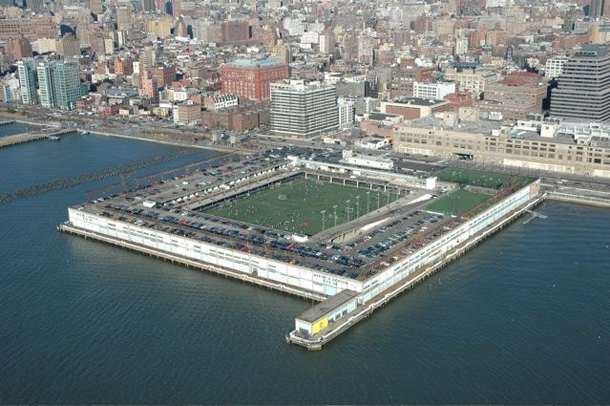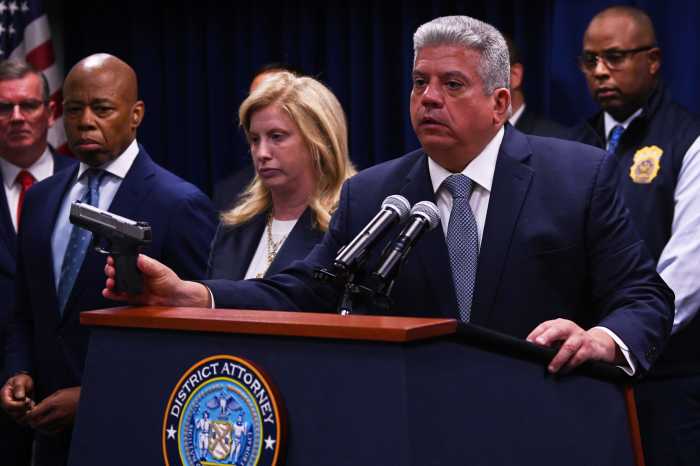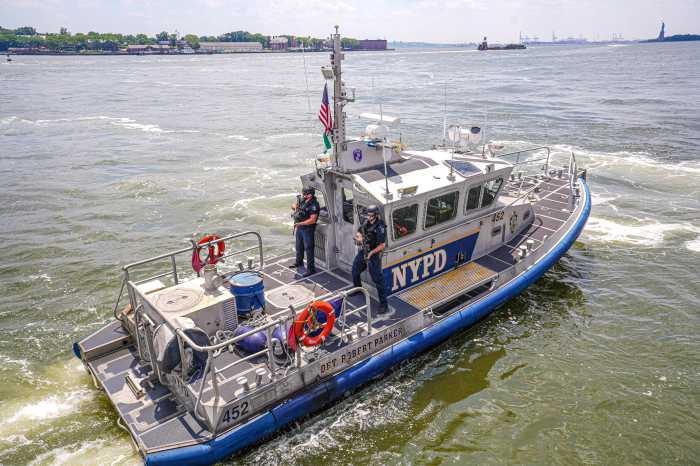BY ALBERT AMATEAU | The state Legislature’s move last week to solve the Hudson River Park’s financial problems by expanding allowable uses on Pier 40 came too little and too late.
Assemblymember Richard Gottfried introduced a proposed amendment to the 1998 Hudson River Park Act on June 15 that would allow hotel and residential uses on part of Pier 76, at W. 36th St., but only art galleries and office development on Pier 40, at West Houston St.
But as the scheduled June 21 end of the legislative session approached, Gottfried acknowledged that the bill was dead, at least for this session.
“It’s clear at this point there is not enough support to pass a bill that does what needs to be done,” he said on Wednesday.
There was no Senate sponsor for the bill.
A proposal to allow residential development on the 14.5-acre Pier 40 — which is prohibited in the original park act — has been finding support from Hudson River Park Trust President Madelyn Wils and others, in view of the estimated $100 million needed to stabilize the pier at Houston St.
In addition, funding for completion and maintenance of the entire 5-mile-long riverfront park is imperiled and could run out in three years.
For many in the waterfront advocacy community, housing development on any public pier would be a betrayal of the public interest. Assemblymember Deborah Glick and members of the Federation to Preserve the Greenwich Village Waterfront and Great Port are opposed to housing on Pier 40. Glick and the Federation both fought the 1998 act that created the park.
However, local youth sports leagues that heavily use the pier strongly favor opening up the park act to allow more use options that could save the pier — and they support the idea of housing on Pier 40.
The bill that failed this week proposed allowing residential and hotel development on that portion of Pier 76 — currently the city tow pound across from the Javits Convention Center — that is not developed as part of the Hudson River Park.
The housing or hotel development would have to be specified in a memorandum of understanding among the governor, the mayor, the Assembly speaker and the state Senate president pro tem after consultation with legislators from the Pier 76 area.
In any case, at least 50 percent of Pier 76 would have to be dedicated to park use.
The proposal also called on New York City to relocate the tow pound and the Midtown mounted police unit off Pier 76 by the end of 2015.
The failed bill further stated that the proposed nonpark development on Pier 40 would also have to be specified in a governor-mayor understanding with legislative leaders. At least 65 percent of Pier 40 would have to be for public recreation.
Another section of the aborted bill stated that while most leases on the commercial piers in the park are limited to 30 years, any lease on Pier 40 would have a 49-year limit, as do Chelsea Piers 59, 60 and 61.
The amendment also called for allowing Pier 54, at W. 14th St., to be expanded to no more than 700 feet long and 160 feet wide. The reason for this proposal was because the Trust has been notified by the Fire Department that the pier is too narrow for the large, sometimes revenue-generating events the authority holds there.
The proposed amendment also called for $15 million in state funding for 2012 to 2013 for immediate capital maintenance in the park.
Also included in the failed amendment was permission for a one-story structure of no more that 12,000 square feet for an estuarium on Pier 26 on the Tribeca waterfront.
If the Legislature has a special session in November or December, the proposed amendment could be on the agenda. However, an amendment could be reintroduced next year in a different form.
































